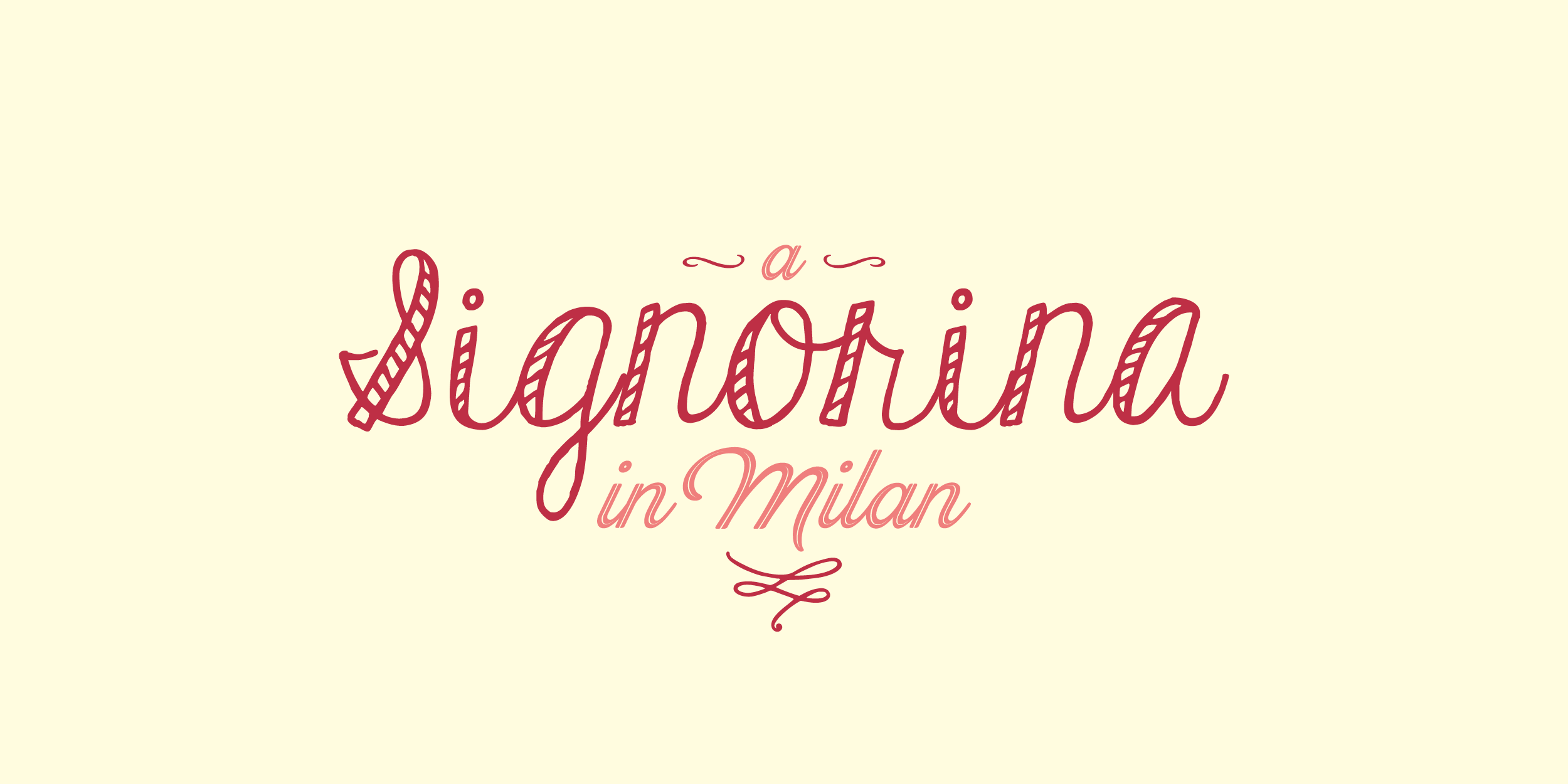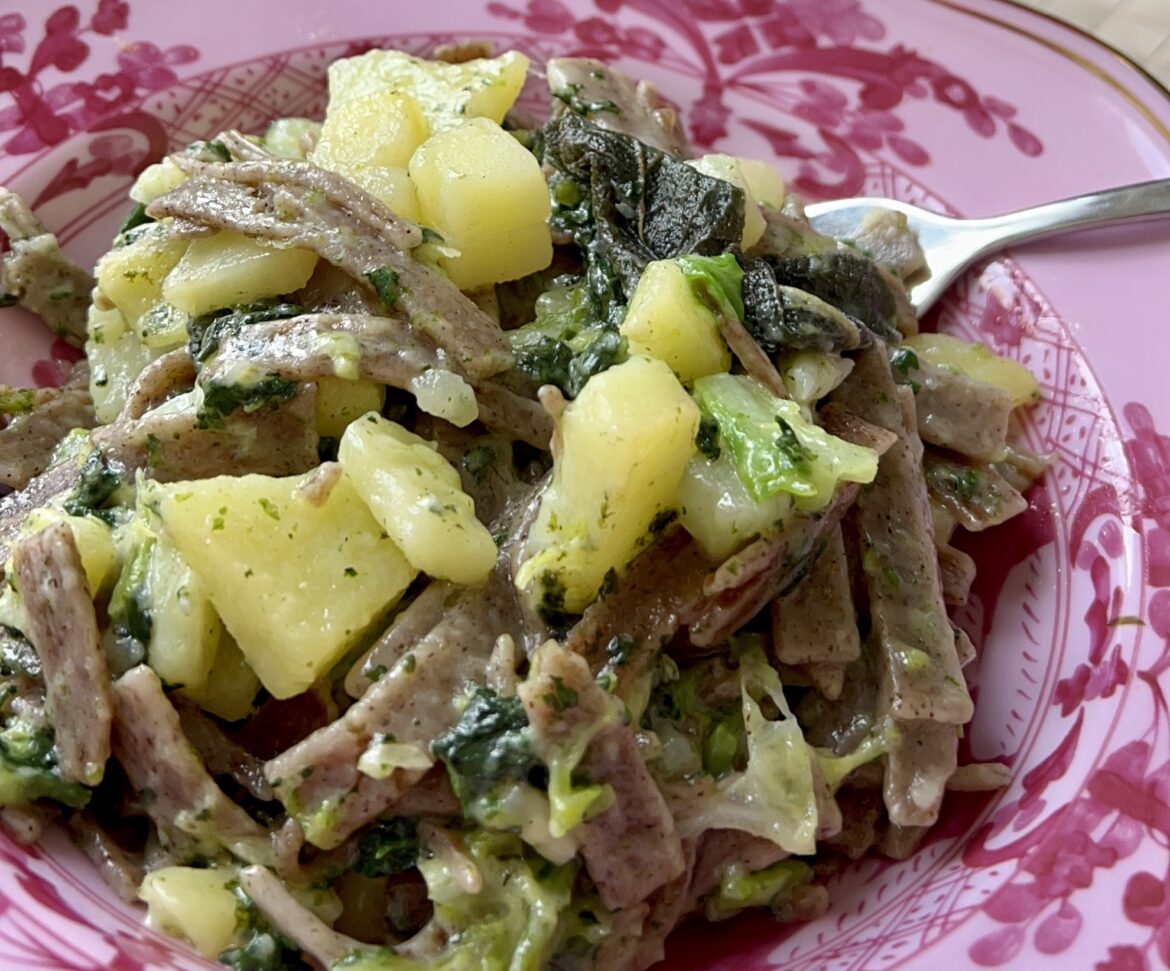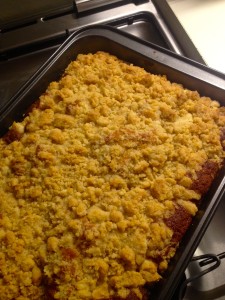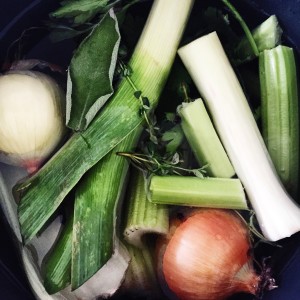So, I haven’t yet watched Stanley Tucci’s Searching for Italy—I missed it on CNN International so I’m saving it for when I’m in the U.S. for the holidays. I do know, though, that during the Lombardy episode, he feasts on a regional classic that’s one of my favorite dishes of all time: pizzoccheri alla valtellinese. I’ve been enjoying this rich pasta preparation at least seven times a winter for the past seven years, so I thought I’d wax poetic about one of my favorite winter non-recipes.
I like to call pizzoccheri “Alpine mac and cheese” as it’s from Valtellina in the Lombard Alps and it’s an irresistibly gooey hodgepodge of buckwheat pasta, garlic and sage butter, melted Casera cheese, potatoes, and cabbage. It’s hearty and robust and, while I don’t like to think of food I love as “bad,” the high-protein buckwheat kind of makes me feel less guilty about scarfing down the high-fat content.
I’ve made the dish so often so I don’t even consider a recipe necessary—unless you’re making the pasta from scratch. Pizzoccheri is made from a mix of buckwheat and 00 (or all-purpose) flour. I know some people who do a 50/50 mix while others opt for more buckwheat, say 250 grams paired with 150 grams of regular flour. The flours are mixed then combined with water to be kneaded into a dough, which is then covered in plastic wrap refrigerated for about an hour. It’s then rolled out until about 3mm thick and cut into 10cm pieces.
I make pizzoccheri by eye, allotting about 250 grams of pasta for two people, and it’s really easy. If I’m making 500 grams, I double the quantities.
First, I start to bring a large pot of water to a boil, then do my prep: I cut 1/4 verza into thin pieces followed by a few leaves of black cabbage and set aside. Then I cut 1 large or 2 small potatoes into small-ish pieces—they shouldn’t be diced but nor should they be ginormous.
In the meantime, I cut around 100-125 grams of Casera, a cheese from Valtellina (if you can’t find it, use Fontina). In a sauté pan, I place a giant knob of butter (around 1/2 stick) along with three whole peeled garlic cloves and several sage leaves.
If I’m using fresh pasta, I start to heat the pan with the butter and sage leaves around 5 minutes before the water looks like it’s coming to a boil. If I’m not using fresh pasta, I switch it on just before the water starts boiling.
If using fresh pasta, I first add salt to the boiling water followed by the potatoes, letting them cook for about 5 minutes before adding the cabbage and pasta. If I’m not using fresh pasta, I add the pasta and potatoes at the same time, then the cabbage around 5 minutes before the end of the cooking time.
In the meantime, the butter should melt and start to brown, so I always keep an eye on that.
When the pasta is done, I drain. Then I remove the garlic and sage from the sauté pan and add half the pasta, potatoes, and cabbage. I cover with some chunks of Casera cheese, then top with the rest of the pasta, potatoes, and cabbage, then add more cheese and let cook over low heat, constantly stirring so that the cheese melts.
When it’s done, I plate and serve and top with grated Grana. It’s funny—Grana and Parmigiano are often used interchangeably, but since this dish is so Lombard, I feel guilty swapping the Grana for Parmigiano, so I always make sure to use the former.
Now what to drink with it? A Nebbiolo—or Chiavennasca, as the grape is called locally, from Barbacan, Arpepe, or Pietro Nera. These flavorful acidic reds cut right through the butter and the cheese, gloriously complementing to the dish.





